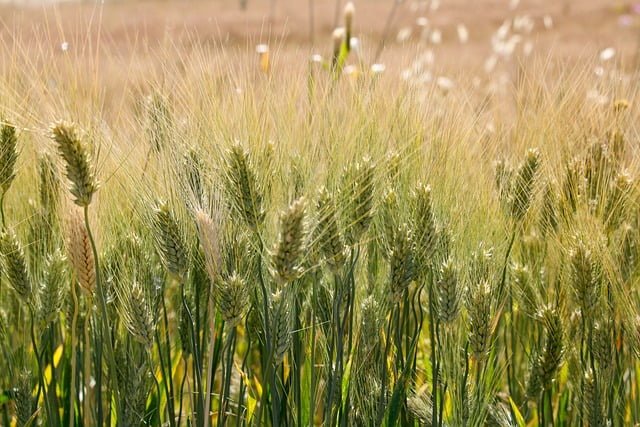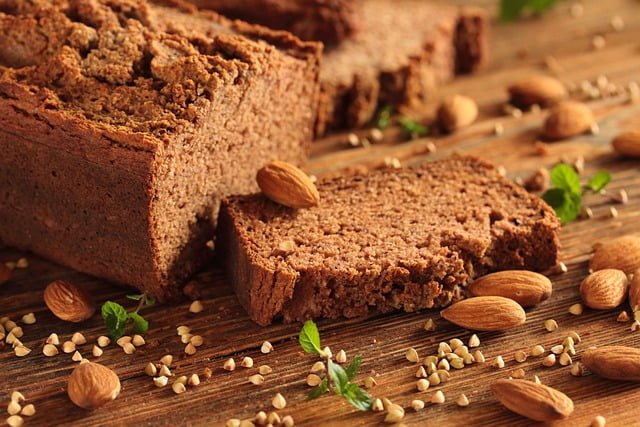In recent years, the gluten-free diet has exploded in popularity, turning into a major trend on the internet and in health-conscious communities. Initially designed for those with specific medical conditions like celiac disease, this diet is now being adopted by a much broader audience. But what is gluten, really? Why are people running after the trend of a gluten free diet? Is it truly harmful, or is it just another fad? After months of research and even trying a gluten-free diet myself for 30 days, I’m here to debunk the myths, discuss the pros and cons, for whom it’s useful, what if I stop consuming foods with gluten even if I have no problem with it- everything!
What Is Gluten?

Gluten is a complex mixture of two proteins, glutenin and gliadin, found primarily in wheat, rye, barley, and some types of oats. It’s the substance that gives dough its elasticity, allowing it to rise and maintain its shape, and it also contributes to the chewy texture of baked goods like bread, pizza, and cakes. Gluten is present in countless foods you probably eat every day, from pasta and bread to soy sauce and even some types of candy.
When flour is mixed with water, gluten proteins form a network that traps air, giving bread its characteristic light and airy structure. Without gluten, many baked goods would be dense and crumbly. Gluten’s unique properties are not easily replicated, which is why gluten-free alternatives often struggle to match the taste and texture of their gluten-containing counterparts.
The Benefits of Gluten
For most people, gluten is not only safe but also beneficial as part of a balanced diet. Since gluten is found in whole grains like wheat, barley, and rye, these foods also come packed with other essential nutrients. For instance:
- Protein: Gluten contributes to the protein content in these grains, which can help balance out their carbohydrate levels. This balance helps you feel full longer, reducing the likelihood of overeating.
- Fiber: Whole grains that contain gluten are typically high in fiber, which is crucial for digestive health. Fiber helps to run your digestive system smoothly. In preventing constipation and maintaining a healthy balance of bacteria in your gut, it has a major role.
- Vitamins and Minerals: Gluten-containing grains are also rich in essential nutrients such as iron, B vitamins (including folate), and magnesium. These nutrients are essential for making energy, forming red blood cells, and keeping your overall health in check.
- Gut Health: Contrary to popular belief, gluten can be good for your gut. It helps good bacteria to grow in your digestive tract, which supports your immune system and overall digestive health.
Avoiding gluten without a medical reason may lead to nutrient deficiencies, particularly if you’re not careful to replace those nutrients with other foods.
Is Gluten Bad for You?
For the vast majority of people, gluten is perfectly healthy and poses no risks. However, there are some individuals who need to avoid gluten due to specific health conditions:
- Celiac Disease: This is an autoimmune condition where eating gluten harms the small intestine. For people with celiac disease, consuming gluten triggers an immune response that attacks the lining of the small intestine, leading to symptoms such as bloating, diarrhea, weight loss, and fatigue. The damage can also prevent the absorption of nutrients from food, leading to further health complications.
- Non-Celiac Gluten Sensitivity: Some people experience symptoms similar to those of celiac disease, such as bloating, gas, and fatigue, despite not having the autoimmune disorder. This condition, known as non-celiac gluten sensitivity (NCGS), is not well understood, but it is believed to affect a small percentage of the population.
- Wheat Allergy: Though less common, some individuals have a wheat allergy, which is an immune response to proteins found in wheat, including but not limited to gluten. This can lead to allergic reactions such as hives, difficulty breathing, and anaphylaxis.
It’s important to note that only a small proportion has this condition. Only about 1% of the population has celiac disease, and NCGS is believed to affect a small percentage of people. For everyone else, gluten is not only safe but also nutritious.
What Happens If Someone with Celiac Disease Consumes Gluten?
In people with celiac disease, consuming gluten can cause serious harm. The small intestine has tiny, finger-like bumps called villi that help take in nutrients from the food you eat. These bumps are important for getting the good stuff out of your food and into your body. When a person with celiac disease eats gluten, their immune system attacks these villi, causing them to flatten out and become damaged. This damage reduces the intestine’s ability to absorb essential nutrients, leading to malnutrition, even if the person is eating a healthy diet.
Symptoms of gluten ingestion in people with celiac disease can vary widely but often include:
- Stomach pain and bloating
- Diarrhea or constipation
- Fatigue and irritability
- Skin rashes
- Joint pain
- Headaches
In children, celiac disease can also lead to developmental delays and growth issues. The only way to manage celiac disease is by following a strict gluten-free diet for life.
Why Not Everyone Should Go Gluten-Free

Gluten-Free Bread
Given that gluten intolerance and celiac disease are relatively rare, most people do not need to follow a gluten-free diet. In fact, unnecessarily avoiding gluten can have negative consequences. Here’s why:
- Nutritional Deficiencies: Gluten-containing foods, especially whole grains, are a significant source of fiber, iron, and B vitamins. A gluten-free diet often relies on processed foods that are lower in these essential nutrients, which can lead to deficiencies.
- Weight Gain: Despite the popular belief that a gluten-free diet can help with weight loss, the opposite can actually be true. Many gluten-free products are made with refined, high-calorie grains and starches that are low in fiber. This can lead to overeating, as these foods are less filling.
- Increased Food Costs: if you’re looking for gluten-free products, you may have to spend more than their gluten-containing counterparts. For example, a package of regular Oreos costs around $3.69, while a gluten-free alternative like Glutino can cost up to $5.99. Additionally, the gluten-free version has more calories per cookie (60 calories versus 53 calories for the regular Oreo), which can add up if you’re trying to manage your weight.
Many people who report feeling better on a gluten-free diet may actually be experiencing the benefits of eating fewer processed foods and more fruits and vegetables, rather than the absence of gluten itself. When you eliminate foods that contain gluten, you might also cut out many processed and high-sugar foods that are contributing to health issues. So, the improvement in how you feel might not have anything to do with gluten at all.
The Popularity of Gluten-Free Diets
The rise in popularity of gluten-free diets has both positive and negative effects. On one hand, it has made life much easier for those with celiac disease and gluten sensitivity, as more gluten-free products are available in stores and restaurants. On the other hand, it has also fueled a wave of misinformation and unnecessary dietary restrictions.
Gluten-free foods have improved significantly in taste and texture, dispelling the old notion that gluten-free meant sacrificing flavor. However, the perception that gluten-free foods are inherently healthier or better for weight loss is misleading. For most people, a balanced diet that includes gluten is healthier and more sustainable in the long run.
My 30-Day Gluten-Free Experiment: What Happened?
Curiosity got the better of me, and I decided to embark on a 30-day gluten-free journey. I don’t have celiac disease or any known gluten intolerance, but with all the hype surrounding gluten-free diets, I wanted to see if eliminating gluten from my diet would make me feel better, more energized, or perhaps even lose a few pounds.
At first, I was excited about the challenge. I carefully read labels, swapped out my regular bread and pasta for gluten-free alternatives, and avoided anything that might contain even a trace of gluten. The transition wasn’t as easy as I thought it would be—gluten is in so many foods, from sauces to snacks—but I was determined to see it through.
The first week was the hardest. I found myself constantly hungry, as many of the gluten-free substitutes didn’t fill me up the way whole grains typically did. I also noticed that some of the gluten-free products were higher in sugar and fat, which made me question whether I was really making a healthier choice.
As the weeks went on, I expected to feel some kind of change—more energy, better digestion, or maybe clearer skin. But to my surprise, nothing remarkable happened. I felt the same as I always had. In fact, I started to miss the foods I had cut out, especially the high-fiber whole grains that kept me satisfied between meals.
By the end of the 30 days, I realized that a gluten-free diet wasn’t for me. Without a medical reason to avoid gluten, I didn’t experience any of the benefits that some people rave about. Instead, I found it more challenging to eat a balanced diet, and I even noticed that I was spending more money on groceries due to the higher cost of gluten-free products.
My experiment taught me an important lesson: unless you have a specific health condition like celiac disease or gluten sensitivity, there’s no need to go gluten-free. For most people, gluten is a harmless and even beneficial part of the diet. So, if you’re thinking about cutting out gluten just because it’s trendy, you might want to reconsider. A balanced diet that includes gluten is likely a better—and easier—choice.
Conclusion: The Real Truth About Gluten
The gluten-free trend shows no signs of slowing down, but it’s important to approach it with a critical eye. Gluten isn’t the bad guy it’s often portrayed as. People with celiac disease or gluten sensitivity have no choice but to avoid gluten as it is essential for health. But for the vast majority of people, gluten is a nutritious part of a balanced diet. Unnecessarily cutting out gluten can lead to nutritional deficiencies, weight gain, and higher grocery bills.
Before deciding to go gluten-free, consider whether you really need to. If you don’t have a medical reason to avoid gluten, there’s no need to eliminate it from your diet. Instead, focus on eating a variety of whole foods, including those that contain gluten, to ensure you’re getting all the nutrients your body needs.
Remember, a healthy diet is not about following trends but about making informed choices that support your well-being. And for the majority of people, gluten can be included in a healthy, well-balanced diet.



